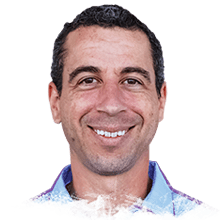Advertisement
Grab your lab coat. Let's get started
Welcome!
Welcome!
Create an account below to get 6 C&EN articles per month, receive newsletters and more - all free.
It seems this is your first time logging in online. Please enter the following information to continue.
As an ACS member you automatically get access to this site. All we need is few more details to create your reading experience.
Not you? Sign in with a different account.
Not you? Sign in with a different account.
ERROR 1
ERROR 1
ERROR 2
ERROR 2
ERROR 2
ERROR 2
ERROR 2
Password and Confirm password must match.
If you have an ACS member number, please enter it here so we can link this account to your membership. (optional)
ERROR 2
ACS values your privacy. By submitting your information, you are gaining access to C&EN and subscribing to our weekly newsletter. We use the information you provide to make your reading experience better, and we will never sell your data to third party members.
Inorganic Chemistry
Maxx Arguilla
This materials chemist creates atom-thin wires and sheets with exciting electronic and optical properties
by Sam Lemonick, special to C&EN
May 19, 2023
| A version of this story appeared in
Volume 101, Issue 16

Credit: Herdeline Ardoña/Will Ludwig/C&EN | Maxx Arguilla
axx Arguilla makes pasta. This is true in the literal sense—Arguilla, a materials chemist at the University of California, Irvine (UCI), is a foodie who likes to cook. But molecular pasta is also a good way to describe the ultrathin wires and other electronic materials he is building his career on.
The field of solid-state chemistry he works in, sometimes described as low-dimensional condensed matter, kicked off in 2004, when Arguilla was in high school. That’s when researchers isolated graphene, a semiconducting carbon material just one atom thick.
Two-dimensional sheets of graphene represent the lasagna noodles of Arguilla’s molecular pasta cupboard. Meanwhile, he has figured out how to create spaghetti—1D wires made from antimony, selenium, and other inorganic elements. His group also grows inorganic tubes inside carbon nanotube templates, making rigatoni. And the researchers can make spiraling helices that resemble fusilli.
Advertisement
While it’s fun listening to Arguilla rattle off the pastas he can make, his topological explorations have a serious aim: finding and harnessing the electronic properties of these nanoscale shapes. Some of the structures produce photons when excited with electricity, which means they could be used in very thin and compact light-emitting diode displays or as components in quantum computers. Similarly, helical shapes can interact with atoms according to the atom’s spin, making them potentially useful in a quantum computing circuit.
The family of 2D materials has grown steadily since the isolation of graphene, “and many have amazing properties as a monolayer that are quite different from the bulk,” says materials chemist Joshua Goldberger of the Ohio State University, who was Arguilla’s PhD adviser. “He’s now doing the same thing with 1D compounds. It will be exciting to see what unique phenomena he’ll discover.”
Aside from discovering new properties, Arguilla wants to better understand the chemistry of these materials: Which combinations of elements make good 1D materials, and how does changing their chemistry affect their shapes, properties, and interactions?
“We have the whole periodic table; we just need to figure out a way to hack the design rules that would enable us to crystallize new materials.”
—Maxx Arguilla, professor, University of California, Irvine
“These very basic questions have not been answered,” Arguilla says. “We have the whole periodic table; we just need to figure out a way to hack the design rules that would enable us to crystallize new materials.” Working in the vanguard of this research area is by turns fun and overwhelming, he says, because so little is known.
Arguilla relies on a mix of chemistry and physics skills that he developed during his training. Arguilla’s graduate work involved making and characterizing new 2D materials and manipulating their properties with new functional groups. As a postdoctoral researcher in Mircea Dincă’s group at the Massachusetts Institute of Technology, Arguilla synthesized new 2D metal-organic frameworks and other porous materials, a class of materials he now uses as templates for his wires.
His training also taught him how to be resourceful. Goldberger was a new assistant professor when Arguilla joined his group, giving the student a front-row view of how to set up a lab and research group. Arguilla’s postdoctoral work had little to do with Dincă’s main research goals, giving him an unusual amount of independence and responsibility.
Even as an undergraduate, Arguilla’s thesis adviser—who was the only inorganic chemist in the department—left just before Arguilla’s senior year, leaving him to develop a project on inorganic catalyst synthesis on his own. All three experiences left him well prepared for the challenges of starting his own group.
Arguilla’s chemistry pursuits don’t end at his lab’s doors, thanks to his involvement in middle school student outreach programs at UCI. Arguilla still remembers the day his fourth-grade science teacher mixed table sugar with sulfuric acid, a reaction that produces a black, smoking tower of carbon rising out of a beaker. Now he relishes the opportunity to give kids that same experience of awe and understanding that still drives him.
And he’s a photographer who sometimes develops his own film. Even as a kid he was fascinated by the chemistry of film photography, he says: using light to excite inorganic particles and freeze a moment of time and space. He sees a parallel of that phenomenon in his research. “I can use an electron microscope to look at the atoms that are sitting there, frozen in time, and use that to understand the material,” Arguilla says.
Vitals
Current affiliation:
University of California, Irvine
Age: 32
PhD alma mater:
Ohio State University
Hometown:
Quezon City, Philippines
My role model is:
“Mildred Dresselhaus. The impact of her science across various fields and disciplines, together with her tremendous efforts in promoting diversity in STEM [science, technology, engineering, and mathematics] and related fields, is something that I personally look up to and aspire for.”
My lab superpower is:
“Finding ways and synthetic routes to grow large and high-quality crystals. Some of the largest crystals that I have synthesized in a lab-scale setting have been 1 cm to 8 cm in the longest dimension.”
Learn more/nominate a rising early-career chemist to be one of C&EN's Talented 12 at:
cenm.ag/t12-nominations-2024
Maxx Arguilla makes pasta. This is true in the literal sense—Arguilla, a materials chemist at the University of California, Irvine (UCI), is a foodie who likes to cook. But molecular pasta is also a good way to describe the ultrathin wires and other electronic materials he is building his career on.
Vitals
▸ Current affiliation: University of California, Irvine
▸ Age: 32
▸ PhD alma mater: Ohio State University
▸ Hometown: Quezon City, Philippines
▸ My role model is: “Mildred Dresselhaus. The impact of her science across various fields and disciplines, together with her tremendous efforts in promoting diversity in STEM [science, technology, engineering, and mathematics] and related fields, is something that I personally look up to and aspire for.”
▸ My lab superpower is: “Finding ways and synthetic routes to grow large and high-quality crystals. Some of the largest crystals that I have synthesized in a lab-scale setting have been 1 cm to 8 cm in the longest dimension.”
The field of solid-state chemistry he works in, sometimes described as low-dimensional condensed matter, kicked off in 2004, when Arguilla was in high school. That’s when researchers isolated graphene, a semiconducting carbon material just one atom thick.
Two-dimensional sheets of graphene represent the lasagna noodles of Arguilla’s molecular pasta cupboard. Meanwhile, he has figured out how to create spaghetti—1D wires made from antimony, selenium, and other inorganic elements. His group also grows inorganic tubes inside carbon nanotube templates, making rigatoni. And the researchers can make spiraling helices that resemble fusilli.
While it’s fun listening to Arguilla rattle off the pastas he can make, his topological explorations have a serious aim: finding and harnessing the electronic properties of these nanoscale shapes. Some of the structures produce photons when excited with electricity, which means they could be used in very thin and compact light-emitting diode displays or as components in quantum computers. Similarly, helical shapes can interact with atoms according to the atom’s spin, making them potentially useful in a quantum computing circuit.
The family of 2D materials has grown steadily since the isolation of graphene, “and many have amazing properties as a monolayer that are quite different from the bulk,” says materials chemist Joshua Goldberger of the Ohio State University, who was Arguilla’s PhD adviser. “He’s now doing the same thing with 1D compounds. It will be exciting to see what unique phenomena he’ll discover.”
Aside from discovering new properties, Arguilla wants to better understand the chemistry of these materials: Which combinations of elements make good 1D materials, and how does changing their chemistry affect their shapes, properties, and interactions?
“These very basic questions have not been answered,” Arguilla says. “We have the whole periodic table; we just need to figure out a way to hack the design rules that would enable us to crystallize new materials.” Working in the vanguard of this research area is by turns fun and overwhelming, he says, because so little is known.
Arguilla relies on a mix of chemistry and physics skills that he developed during his training. Arguilla’s graduate work involved making and characterizing new 2D materials and manipulating their properties with new functional groups. As a postdoctoral researcher in Mircea Dincă’s group at the Massachusetts Institute of Technology, Arguilla synthesized new 2D metal-organic frameworks and other porous materials, a class of materials he now uses as templates for his wires.
His training also taught him how to be resourceful. Goldberger was a new assistant professor when Arguilla joined his group, giving the student a front-row view of how to set up a lab and research group. Arguilla’s postdoctoral work had little to do with Dincă’s main research goals, giving him an unusual amount of independence and responsibility.
Even as an undergraduate, Arguilla’s thesis adviser—who was the only inorganic chemist in the department—left just before Arguilla’s senior year, leaving him to develop a project on inorganic catalyst synthesis on his own. All three experiences left him well prepared for the challenges of starting his own group.
Arguilla’s chemistry pursuits don’t end at his lab’s doors, thanks to his involvement in middle school student outreach programs at UCI. Arguilla still remembers the day his fourth-grade science teacher mixed table sugar with sulfuric acid, a reaction that produces a black, smoking tower of carbon rising out of a beaker. Now he relishes the opportunity to give kids that same experience of awe and understanding that still drives him.
And he’s a photographer who sometimes develops his own film. Even as a kid he was fascinated by the chemistry of film photography, he says: using light to excite inorganic particles and freeze a moment of time and space. He sees a parallel of that phenomenon in his research. “I can use an electron microscope to look at the atoms that are sitting there, frozen in time, and use that to understand the material,” Arguilla says.
















Join the conversation
Contact the reporter
Submit a Letter to the Editor for publication
Engage with us on Twitter